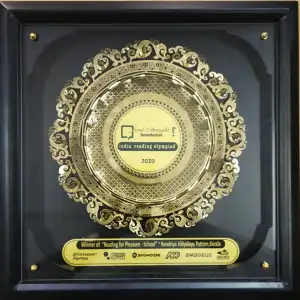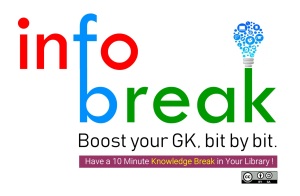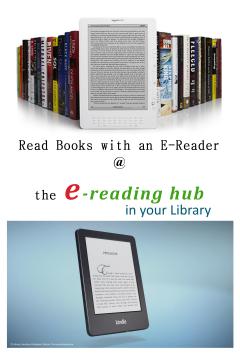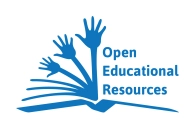Every student must obtain 75% of attendance. There may be a relaxation of
15% in the case of illness or a student participating in national level sports’
activities.
Separate question papers in Science and Mathematics of Secondary (class X)
level will be provided for blind students. Separate question papers in Physics,
Chemistry Biology and Maths of Senior level (class XII) will also be provided for
blind students.
The Board has decided not to conduct separate paper in Practical Skills in the
Science subject and the practical component in the subject of Foundation of
Information Technology w.e.f. 2011 Examination onwards. These will be
assessed in the theory paper in the external examination in the concerned
subject.
From 2011 Examinations the Answer Books in all the subjects will be of the
same type (Horizontal) as was used earlier.
The main answer books (without Graph) both for classes XII & X will contain 32
pages. Answer books (with Graph) both for classes XII & X will contain 48
pages as per previous years.
Those who are re- appearing as private candidates in Class X, the question
paper will be bases on the SA-II syllabus.
Important Information about CCE based Class X Examination
Scheme of the Board
Senior Secondary Schools
There will be no Class X Board Examination w.e.f. 2011 for students studying in
CBSE’s Senior Secondary schools and who do not wish to move out of the CBSE
system after Class X.
However, such students of Senior Secondary Schools who wish to move out of
the CBSE system after Class X (Pre-University, Vocational course, Change of
Board, etc.) will be required to take the Board’s External (pen and paper
written/online) Examination.
Further, those students who wish to assess themselves vis-à-vis their peers or
for self assessment will be allowed to appear in an On Demand (pen and paper/
online) Proficiency test.
Secondary Schools
The students studying in CBSE’s Secondary schools will however be required to
appear in Board’s External (pen and paper written/online) Examination because
they will be leaving the secondary school after Class X.
The schools will conduct the SA-II for Class IX during the first half of March,
2011; the SA-II for Class-X will be conducted during the second half of March,
2011.
The Board has sent separate CDs containing Question Paper Banks for Classes
IX & X and the school may:
i) pick up one question paper for each subject, OR
mix and match the paper by using different questions/sections from different
sets of question papers and prepare a question paper based on Board’s sample
paper, design and blue print, OR
prepare their own question papers as per sample paper, design and blue print
available on CBSE’s website (www.cbse.nic.in) . However, in case the school
prepares its own question papers, the question papers and marking scheme so
prepared should be emailed to the Board (email id: cbsecceqp@gmail.com)for
verification within a week of conduct of the respective papers.
ii) For Class IX, the CDs containing question papers to all schools have been
dispatched.
iii) For Class X, the Board plans to dispatch the CDs containing question papers to all
schools so as to reach by 07th March, 2011.
iv) Every School, Sahodaya Clusters or City may design their own date sheet for
Classes IX and X examination accordingly.
Another CD containing the Marking Scheme of the main subjects would be sent to
every school separately in due course and wi l l reach the schools well in time.
The answer books should be evaluated by teachers as per the marking scheme
provided by the Board.
Answer books of school based SA-II for classes IX and X are not be sent to the
board under any circumstance. However would be preserved and kept in the safe
custody at the school for at least a period of three years (in case of Class IX) and
two years (in case of Class X) along with question papers and Marking Scheme
for any verification by the Board subsequently.
Schools have been directed not to communicate the marks of Summative
Assessment- II to the candidates of Class X under any circumstance.
There would be no difference between students appearing for school based or
board based SA-2.
Students appearing for School Based Examination would apply for verification of
Marks to the schools only and schools would verify their answer books and
communicate the result.
In 2011 common certificate will be issued to all the candidates by the Board,
whether appearing for the Board Based or School Based Summative Assessment-
II.
Verification of Evidence of Assessments (EAs)
The Board is doing a random collection and verification of the ‘Evidence of
Assessments (EAs)’ conducted at school level.
These ‘Evidence of Assessments (EAs)’ and the marks awarded will be verified
by the subject experts appointed and empanelled by the Board at the Regional
level. The experts would submit their report on these ‘Evidence of Assessments
(EAs)’ vis‐a‐vis award of marks. Their report will help in verifying the school
based assessments as well as provide feedback to the Board about
implementation of CCE scheme.
The shortlisted schools will send the ‘Evidence of Assessments (EAs)’ initially in
five subjects: Hindi, English, Mathematics, Science and Social Science
comprising of the performance of five students taken from each of the three
categories i.e. top, middle and bottom levels of achievements.
Schools are required to send information latest by 20th March 2011 detailed
circular no 12 released on 24.02.2011 is available on board’s website
http://www.cbse.nic.in in this regard.
Collection of Assessment Data of students
The Board is collecting the assessment data electronically from all the schools.
The format of Certificate of School Based Assessment to be issued by the Board
is available on website. The Board has finalized a software for all schools to
download List of Candidates with Roll No from Board’s website; compile and
upload term wise details in respect of each candidate. Details regarding this
have been intimated in circular no 14 dated 25.02.2011 available on board’s
website www.cbse.nic.in.
2. Sample Question Papers
Sample Question Papers in all subjects have been revised, published and
uploaded on the Board’s website for March 2011 examination.
3. CBSE TELE COUNSELLING
CBSE started this pioneering community work 14 years back in 1998 for the
first time. The highlights of CBSE Tele-counselling are:
(i) It is offered by trained counselors and Principals from within CBSE
affiliated schools located in and outside India.
(ii) It is a voluntary, free of cost service provided by the participants.
This year 49 Principals, trained counselors from CBSE affiliated government and
private schools and few psychologists are participating in Tele-Counseling to address
exam related psychological problems of the students. 44 of them are available in
India while 4 are located in Dubai, Doha Qatar, Kuwait and for the first time at a new
centre located in Japan.
Centralized Toll Free Access in India
Students can dial a toll free number 1800 11 7002 from any part of the
country to get centralized access to CBSE helpline. While the general queries are
answered by the operators, students are connected to the principals or counselors in
case of exam related anxiety or stress.
This year so far approximately 6000 calls have been received on the toll free
number from 1st to 28th February. Out of these approximately 1600 calls were
handled by different counselors. Last year approx. 14000 calls were received during
the same time. Out of these approx. 7333 calls were handle by different counselors.
Counselling for Specially Abled Children
For the third year CBSE has arranged to provide counseling to specially
abled children to take care of the needs and anxiety of special children.
IVRS:
First to be introduced by any Board of Education in the country, CBSE
has made a unique effort to provide tele-counseling through Interactive Voice
Response System (IVRS) mode. The service is available for the sixth consecutive
year on BSNL on 12501022.
QUESTION-ANSWER COLUMNS:
CBSE experts have also answered queries of students through weekly
question answer columns published in national newspapers like The Hindustan
Times, the Hindu and Amar Ujala during the month of February.
ON-LINE COUNSELING:
Public can also log on to the CBSE website and Interact with Chairman on
exam related issues. The Director (Academic) and Controller of Examinations, CBSE
can also be contacted for On-line counseling on: director.edusat@rediffmail.com,
mcsharma2007@rediffmail.com.
CBSE WEBSITE:
Information related to examinations and techniques to cope with exam.
related anxiety is also provided at the CBSE website http://www.cbse.nic.in by accessing
icon Helpline.
4. Preparations for smooth conduct of examinations
(i) The sealed question paper packets will be opened in the presence of at
least four Asstt. Superintendents-one of them would be from the
school other than the examination centre as a witness.
(ii) The center material has been dispatched to all the examination centers.
(iii) Admit cards have been dispatched to all schools/centers.
(iv) Appointment of full time observers at sensitive centres in Delhi and
outside has been completed.
(v) The Board has also finalized the arrangement with the State machinery,
local police to ensure trouble free examinations throughout the country.
(vi) Center Supdt.(s) should approach the local police authorities for ensuring
that adequate police force is made available at the place of custody of the
question papers and the examination centre. The State law enforcing
agencies have also been requested to provide adequate police force at the
place of custody of question papers and the examination centres.
(vii) Scanned photographs of Private candidates have been provided on
admission cards to avoid impersonation or any other possible use of unfair
means.
(viii) CBSE has a 3 tier arrangement for surprise checking:
a) CBSE flying squads
b) Flying squads from Directorate of Education, Delhi
c) Special observers from outside.
(ix) Observers to oversee the conduct of practical examination for class XII
have been appointed this year also.
(x) Chief Nodal Practical Examiners have been appointed this year also to
monitor the proper conduct of practical examinations for class XII.
(xi) District level committees were constituted to suggest schools with
adequate infrastructure for fixing up of examination centres. This will
facilitate smooth conduct of examinations outside Delhi.
5. For private candidates appearing from Delhi Region
Intimation letters to all the private candidates appearing for class X & XII
examination 2011 have been sent. Private candidates may collect admit card
from the examination centre mentioned in their intimation letter. In case
intimation letter is not received, it may be printed from CBSE website
http://www.cbse.nic.in and on production of the same at the examination centre,
Admit Card can be collected or CBSE Regional Office at Institutional Area, I. P.
Extension, Patparganj, Delhi can also be contacted during normal working
hours.
(a) Observation Schedules: To give fair deal to the question papers and
redress genuine grievances of the students, observation schedules have been
sent to all the schools principals to record and forward their suggestions
within 24 hours of the conduct of examination of concerned subject so that
these can be considered by the expert group while preparing the marking
schemes.
(b) Mandatory evaluation: Teachers selected for evaluation work have to
report on the appointed date and time failing which a mention will be made
in their annual records. Non-release of teachers by any school may lead to
withholding the result of the defaulting institution. The Board may also
consider and initiate disaffiliation proceedings. However, those extending
willing and effective cooperation will also find a mention in their personal
records.
7. Exemptions given to Spastic, Blind, Physically Handicapped, Autistic,
Dyslexic and candidates with disabilities as defined in the Persons with
Disabilities Act, 1995:-
1. Exemption from studying third language up to middle school level (i.e. Class
VIII);
2. At Secondary School level a candidate has an option to opt for one language
and any four of the following electives.
Mathematics, Science, Social Science, Another Language, Music, Painting,
Home Science, Introductory Information Technology, Commerce (Elements
of Commerce) and Commerce (Elements of Book Keeping and
Accountancy)
3. permission to use an amanuensis;
4. the amanuensis is a student of class lower than the one for which the
candidate will be taking the examination;
5. the Centre Superintendent of the Examination Centre chooses a suitable
amanuensis and forwards his/her particulars to the Regional Officer
concerned for consideration and approval;
6. the services of amanuensis are provided free of cost to the above mentioned
categories of candidates;
7. the amanuensis shall be paid remuneration as prescribed from time to time
by the Board, which at present is Rs.100/- per day;
8. the candidate may be permitted to use the services an amanuensis in all or
any of the papers.
9. the candidate may be permitted to draw the diagrams etc. themselves, if
desired by them.
10. As per the new rule the special category students appearing for X or XII
examination shall be allowed additional time as given below:
(i) 60 minutes for a paper of 3 hours duration.
(ii) 50 minutes for a paper of 2 ½ hours duration
(iii) 40 minutes for a paper of 2 hours duration
(iv) 30 minutes for a paper of 1 ½ hours duration.
11. the Centre Superintendent shall make the sitting arrangements for special
category candidates on the ground floor, as far as possible;
12. alternative type questions are provided in lieu of questions having visual
inputs for the blind candidates in English Communicative and Social Science
for Class X and History, Geography and Economics and Political Science for
Class XII;
13. Question papers of Maths and Science in Braille for Class X for Blind
candidates.
14. separate question papers in enlarged print for Mathematics and Science in
Class X are provided for candidates having visual impairment;
15. the Centre Superintendent(s) are directed to send the answer books of
special category students in separate covers to the Regional Office
concerned;
16. to facilitate easy access, a few selected schools are made examination
centres for special students;
17. Blind candidates from Delhi have the facility to use computer or a typewriter
for writing answers;
18. Teachers from blind schools are appointed as Assistant
Superintendent(s)(Invigilators) at the special examination centres. However,
precaution be taken to appoint different subject teachers on different days;
19. a separate column has been provided on the title page of the answer book for
indicating the category of special candidates so that these answer books
could be segregated for sending them separately to the Regional Office of the
Board.
20. It is not mandatory for these candidates to do the calculations themselves.
Source: http://www.cbse.nic.in
Filed under: Snippets, CBSE Board Exam 2011





























































